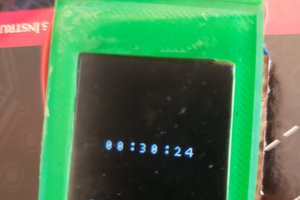Ok, let's be honest: we don't pretend to be able to create a device that can actually flag down nearby spaceships. But we CAN make a device with lots of antennas and try to do something useful with it.
The ESP8266 comes with wifi capability, we can do something useful with that. We found a ride sharing service with a public API that we could query for available rides. To keep it simple the device needs to know where you are, so we need a GPS for that. And a screen to display the results.
In keeping with the HHGTTG theme, we should also make sure the device can tell which planet it's on.. After all, GPS only works on planet Earth. We added a pressure/temperature sensor to be able to take measurements and compare those to a small database of supposedly inhabitable planets..
From there, we thought it would be nice to be able to display the measured data in a nice way, so we added a clock function where a clock is displayed and other avaiable data is presented.
Next, we thought it might be nice to be able to find other electronic thumb users. If we have wifi and a gps, we could just publish our location in the ssid, while at the same time looking for ssid's from other thumbs. If we find one we'll display the course and distance. Nice to find your family/friends in a conference hall or theme park, or put a beacon on your car and find it in the parking lot..
Lastly, we shouldn't forget to have a go at the ultimate function of the Electronic Thumb: Flagging down spaceships. Since we lack info on the protocol and frequency used to do that, we'll design our own protocol and implement it on a radio device like a 433 Mhz transmitter. It might work! It might also interfere with some local electrical equipment as well though.. Can't guarantee that our protocol wouldn't turn off all remotely switched lights in the immediate area.. And maybe, just maybe it would eventually result in a Vogon spaceship picking us up. We'll to keep our towels close at hand while testing..

 Aidan Draper
Aidan Draper
 dwuhls
dwuhls
 Samuel Comeau
Samuel Comeau
 Yurii Rashkovskii
Yurii Rashkovskii